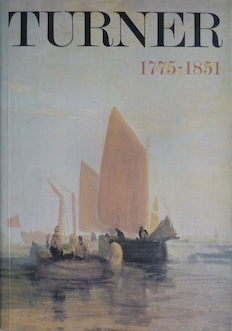|
17 XI 2024 |
4. Success at the Royal Academy 1801-12
081 - The Deluge | |

| ||
|
A note in the British Press for 8 May 1804 stated that ‘Mr. Turner is engaged upon a very large picture of the Deluge, which he intends for the exhibition next year'. By 'the exhibition' is probably meant that at the Royal Academy, but, apparently owing to some dispute in the Academy Council, Turner told Farington on 21 February 1805 that he would 'not exhibit at the Royal Academy but at his own House'. It is likely therefore that 'The Deluge', like 'The Shipwreck', was on view in Turner's own gallery from early May to the beginning of July 1805. When exhibited again at the Academy in 1813, the same year as ‘Frosty Morning' (No. 161), it must have looked rather strange, but the Morning Chronicle praised it as a good composition, and treated with that severity of manner which was demanded by the awfulness of the subject. The catalogue contained the following lines from Milton's Paradise Lost: Meanwhile the south wind rose, and with black wings Wide hovering, all the clouds together drove From under heaven——- ——- the thicken' d sky Like a dark cieling [sic] stood, down rush'd the rain Impetuous, and continual, till the earth No more was seen. As in the case of his Plague pictures Turner may have been spurred on by the example of Poussin, whose own picture of the subject he had studied closely in the Louvre in 1802 (for his notes see the Studies in the Louvre' sketchbook, T.B.LXXII-4Iv, 42). But Turner's main inspiration, particularly in the vivid colouring of the figures on the right, came from Titian and Veronese. The drawing inscribed 'Study for the Deluge’ in the ‘Calais Pier' sketchbook shows an alternative composition, and that inscribed as for the 'Whirlwind' is also related (T.B.LXXXI-120, 121, 163). The group of a negro supporting a girl on the right is close to a figure study in the 'Studies for Pictures' sketchbook of c. 1800-2 (T.B.LXIX-66). The composition was subsequently engraved by J. P. Quilley in 1828, perhaps significantly only two years after John Martin exhibited the first of his two large pictures of the subject, and again with considerable alterations for the Liber Studiorum (R.88) but never published. This work is also available as a painting. An image generated by an AI Machine Learning Model Property of the artist. | ||
